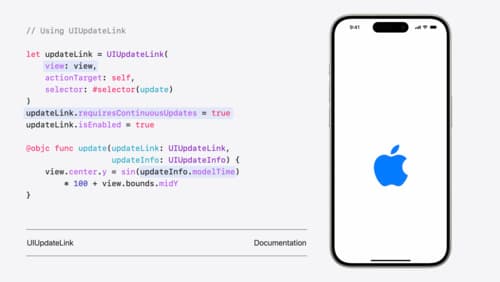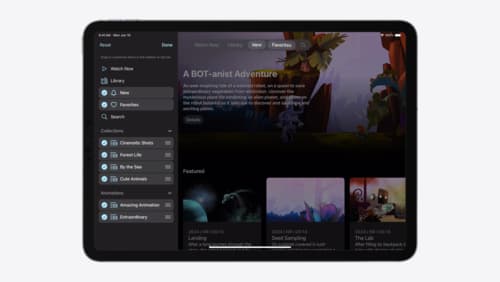changes to the tab bar
Asked on 2024-08-02
1 search
Apple introduced several changes to the tab bar in iPadOS 18, as discussed in the session Elevate your tab and sidebar experience in iPadOS. Here are the key updates:
-
Visual Refresh: The tab bar has a new compact look that reduces unused vertical and horizontal space, bringing more content to the forefront. It now sits at the top of the app, closer to other navigation controls, making it easier to reach (source).
-
Integration with Navigation Bar: The tab bar shares a safe area with the navigation bar for a more integrated appearance. Items from the navigation bar will automatically move to overflow if there's not enough room to show alongside the tab bar (source).
-
Customization Features: Users can personalize their tab bar by adding their favorite tabs through drag and drop. Tabs can be reordered or hidden, and additional items can be added from the sidebar (source).
-
New API for SwiftUI and UIKit:
- SwiftUI: A new syntax in SwiftUI makes it easier to catch common errors at build time. You now declare a tab struct with a title, image, and content view. Optionally, include a selection value to enable programmatic selection (source).
- UIKit: New APIs allow better description of your app hierarchy to
UITabBarController. You can createUITabinstances to represent each top-level section of the app and assign them to the tabs property on the tab bar controller (source).
-
Combined Sidebar Experience: The tab bar can morph into a sidebar for deeper navigation. This combined experience allows for quick navigation using the tab bar while providing access to deeper sections of the app through the sidebar (source).
-
Platform Considerations: The new tab and sidebar features are designed to work seamlessly across different Apple platforms, including macOS and visionOS (source).
For a detailed walkthrough of these changes, you can watch the session Elevate your tab and sidebar experience in iPadOS.

What’s new in UIKit
Explore everything new in UIKit, including tab and document launch experiences, transitions, and text and input changes. We’ll also discuss better-than-ever interoperability between UIKit and SwiftUI animations and gestures, as well as general improvements throughout UIKit.

Elevate your tab and sidebar experience in iPadOS
iPadOS 18 introduces a new navigation system that gives people the flexibility to choose between using a tab bar or sidebar. The newly redesigned tab bar provides more space for content and other functionality. Learn how to use SwiftUI and UIKit to enable customization features – like adding, removing and reordering tabs – to enable a more personal touch in your app.

Platforms State of the Union
Discover the newest advancements on Apple platforms.
